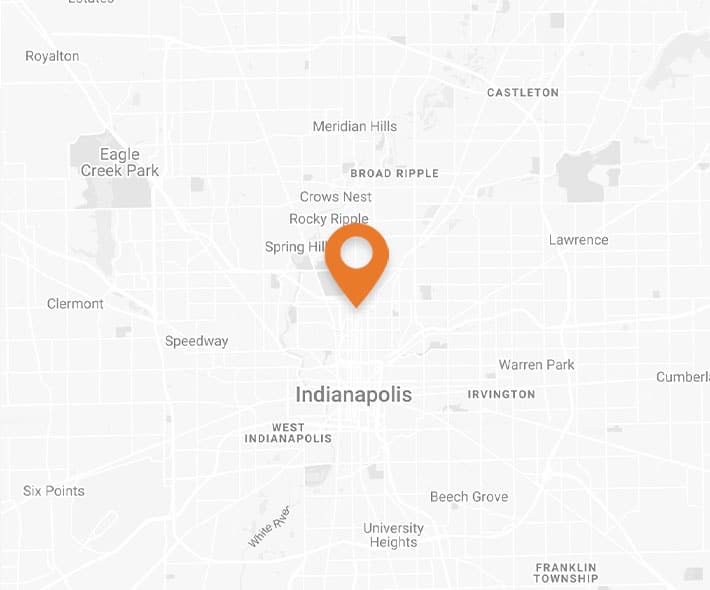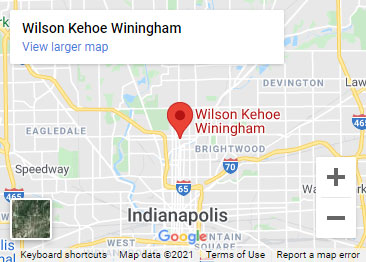What You Should Know About the NCAA’s Concussion Safety Protocol
Updated February 20, 2021 | By Wilson Kehoe Winingham staff
Football is America’s sport, and Americans love it just the way that it is. Part of the fun for the spectators is the intensity and violence. It’s a safe assumption that most football fans know that players can obtain concussions after blunt, sudden impacts to the head or upper body (e.g. tackles and falls). What better way to reduce the risk of concussions than to minimize the violence?
In the past, softening the game had in fact been discussed, and not surprisingly, it was quickly ruled out. Despite strong suggestive research indicating that repeated brain injuries can lead to brain disease—as well as other potential permanent disturbances in cognitive function later in life—an alteration to the sport was a no-go. But something had to give, and in 2010, it finally did.
Concussion Safety Protocol Checklist
In 2010, the National Collegiate Athletic Association (NCAA) adopted a concussion safety protocol to be implemented in all 65 member schools. It was developed with the help of seasoned physicians, neurologists, athletic trainers and directors, coaches, conference administrators, and the NCAA’s concussion safety protocol committee. The checklist exists to properly educate and prepare athletic departments as they ensure the safety and well-being of student-athletes.
A concussion safety protocol checklist is distributed to every NCAA member school before the football season begins. The process was initiated in January 2015. The five Division I conferences passed concussion safety protocol legislated, building upon the legislation already applied.
The checklist has since been updated, its latest version published in spring 2020, highly related to the coronavirus and providing flexibility and support for NCAA schools. The main updates include not requiring a review for concussion management protocol, the Concussion Safety Protocol Committee conducting reviews, and ensuring that NCAA institutions comply with the requirements of concussion management practices.
The outline of the current Concussion Safety Protocol includes the following categories:
- Pre-season education
- Pre-participation assessment
- Recognition and diagnosis of a concussion
- Initial suspected concussion evaluation plan
- Post-concussion management
- Return-to-learn
- Return-to-Sport
- Limiting Exposure to Head Trauma
Each category has requirements that follow a management plan, meaning in order to complete and manage the assessment, there are specific rules that need to be completed by and for the student-athlete. Health care administrators at each school are responsible for making sure the safety protocol follows the legislation surrounding concussion safety.
PRE-SEASON EDUCATION MANAGEMENT
Literature regarding concussions and concussion management are distributed to:
- Student-athletes
- Coaches
- Team physicians
- Athletic directors
- Athletic trainer
- Any party involved in the health and safety of student-athletes
Each party must sign an acknowledgment stating that they read and understood all of the material.
PRE-PARTICIPATION ASSESSMENT
After the educational materials have been distributed, varsity student-athletes are required to receive a baseline concussion assessment involving:
- Brain injury/concussion history
- Cognitive assessment
- Evaluation of balance
- Symptoms evaluation
A team physician is required to give each varsity student-athlete clearance to move forward with the season. If a student-athlete has had a concussion in the past or has experienced multiple traumatic brain injuries (TBIs), it is recommended that they receive another baseline evaluation six months from the initial evaluation date.
RECOGNITION AND DIAGNOSIS OF A CONCUSSION
Any student-athlete that displays signs or symptoms of a concussion must be:
- Removed from play or practice immediately to be evaluated by a certified athletic trainer or team physician (either D.O. or M.D.) with experience related to concussions
- Removed from play or practice for the remainder of the calendar date if a concussion diagnosis is confirmed
- Can only return when the concussion is so longer suspected
If a concussion is suspected, the pre-participation assessment is to be performed on the student-athlete by the appropriate medical professional. Depending on the sport, medical personnel must either be present at the sports event or must be available to contact.
Initial Suspected Concussion Evaluation
Once a concussion is suspected, the management plan specifies the need for a variety of health assessments for the injured player. These assessments include:
- Clinical assessment for major injuries like cervical spine trauma, skull fracture, intracranial bleeding, and catastrophic injury
- Symptom assessment
- Physical exam
- Neurological exam
- Cognitive assessment
- Balance exam
POST-CONCUSSION MANAGEMENT
If a concussion diagnosis is confirmed, written and/or oral documentation is to be provided to both the student-athlete and another adult (e.g. a roommate or family member). After diagnosis, the remainder of the protocol requires that emergency transportation is readily available if the student-athlete exhibits any of the following symptoms:
- Prolonged loss of consciousness
- A continuously diminishing mental state or cognitive abilities
- Vomiting
- Spine injury
- Glasgow Coma Scale < 13*
*The Glasgow Coma Scale is used to determine the level of consciousness/severity of a traumatic brain injury. The scale measures an individual’s ability to open their eyes and assesses the state of verbal and motor responses. A mild score is between 13 and 15 and can therefore result in permanent brain damage.
Since symptoms of a concussion can be delayed, other complications could arise that need further exploration, such as:
- Mood disorders
- Headache disorders
- Sleep dysfunction
- Post-concussion syndrome
- Vision dysfunction (e.g. dizziness or vertigo)
If the student-athlete has persistent symptoms or even atypical symptoms diverging from a mild concussion, a physician needs to re-evaluate the student and additional diagnoses may need to be considered. In the re-evaluation, the physical can also give referrals and direct other options.
Return-to-Learn
With more complex cases of student-athlete concussions, a team of professionals will be assigned as a multi-disciplinary team. This team may consist of the team physician, athletic trainers, coaches, college administrators, academic counselors, psychologists, course instructs, and others. The team will determine when it is okay for the student to return to their classes. There must be a re-evaluation by the team physician along with the multidisciplinary team if symptoms last longer than two weeks
If the concussion is milder and not as severe as a complex case, the student-athlete will be assigned a point-of-contact person within the athletic department who will help guide the student-athlete back into the classroom.
The return-to-learn plan includes:
- An individualized plan for returning to the classroom and for tolerance for studying
- Re-evaluation by the team physician if concussion symptoms are worse as academic studies continue
- Schedule modification and.or accommodations for academic material
- If a modified schedule or academic accommodations cannot be controlled, the point-person should engage the student-athlete with campus resources consistent with the Americans with Disability Act Amendments Act (ADAAA). Resources include learning specialists, office of disability services, or and ADAAA office.
RETURN TO PLAY MANAGEMENT
Ultimately, it’s up to the team physician or another medical specialist to give the go-ahead for a student-athlete to return to play. A step-by-step management plan must be developed by a healthcare official with concussion-related expertise. The management plan requires that all injured student-athletes limit cognitive and physical activity until they return to baseline requirements via assessment. Afterward, they can slowly start to reintroduce all of their usual routines.
When athletes don’t exhibit new or worsening symptoms while performing any of these functions, they’re on the right path. They can begin returning to normal sports-related activities, such as:
- Light exercise without resistance training
- Football-related exercise with a lack of head impact
- Non-contact practice with progressive resistance training
- Unrestricted play
- Return to play
Each step in the return-to-sport section of the protocol should take at least 24 hours if not more. To participate in unrestricted return-to-sport, unrestricted return-to-learn must be implemented first.
Limiting Exposure to Head Trauma
This section of the Concussion Safety Protocol is less of a checklist and more of a review of standards that must be practiced before, during, and after a student-athlete gets injured. It stands as a reminder for injury-prevention.
NCAA teams need to take action to limit head trauma exposure that follows the Interassociation Recommendations, particularly their regulations for Preventing Catastrophic Injury and Death in Collegiate Athletes. Examples include:
- All practices and games follow existing ethical standards
- Prohibiting the use of protective equipment as weapons (for example, using a helmet to injure another player
- Purposefully and intentionally injuring another player is illegal, whether during practice of competition
- All protective equipment must meet the safety standards and certification requirements
- Keep head out of blocking and tackling for contact sports
Contact a Brain Injury Attorney Today
Sports are violent; that is an inarguable fact, but it’s part of the fun. However, it doesn’t mean that injuries sustained from playing sports should leave you or your child in pain.
If you or a loved one have been injured as a result of a sports-related concussion or brain injury, contact the Indianapolis Brain Injury Attorneys of Wilson Kehoe Winingham. The lawyers at WKW can help you get the compensation you deserve. Call 317.920.6400 or fill out an online contact form for a free, no-obligation case evaluation.
Contact Us
Let WKW put our experience to work for you. Contact us for your free case evaluation.
Or, call us today at (317) 920-6400


